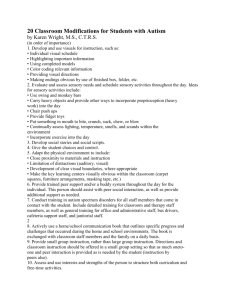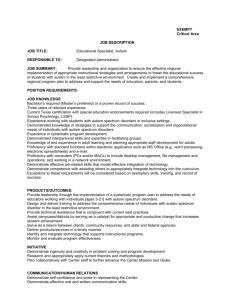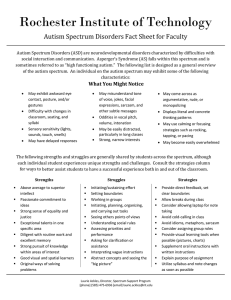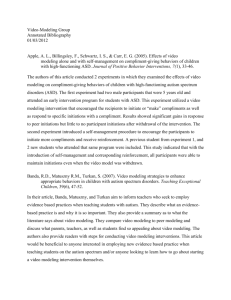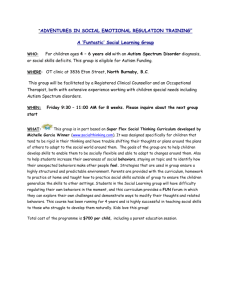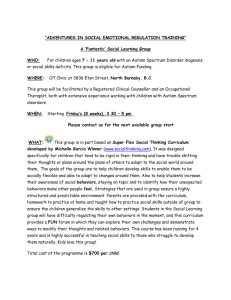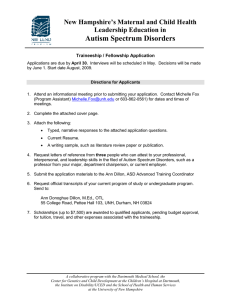specific steps for designing and implementing work systems
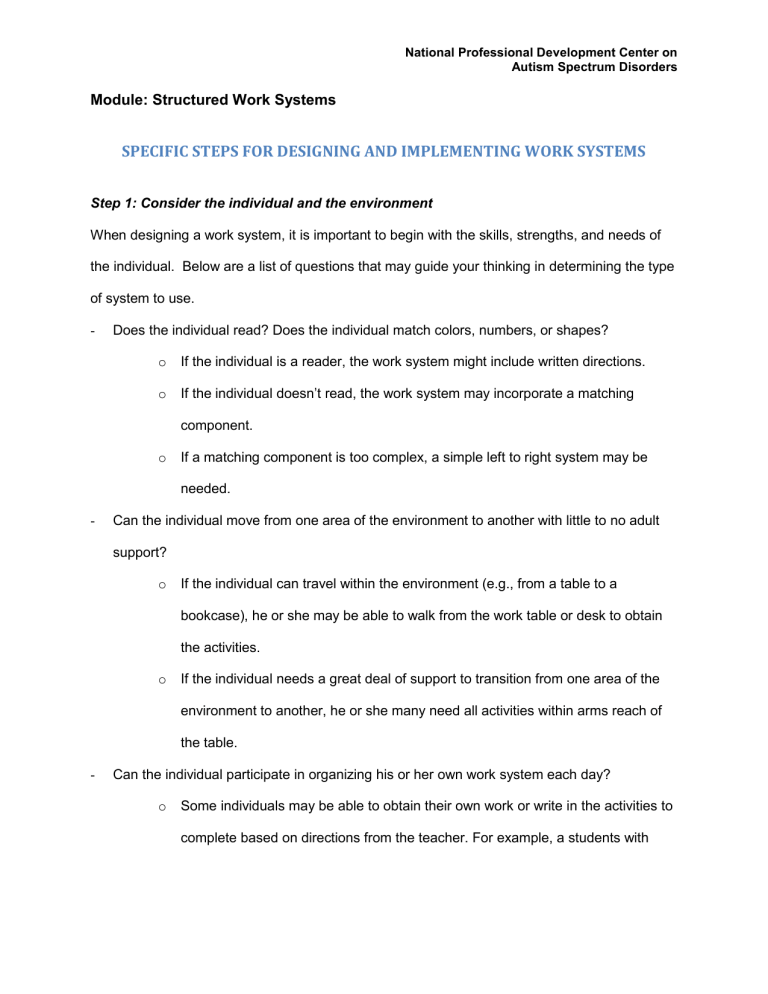
National Professional Development Center on
Autism Spectrum Disorders
Module: Structured Work Systems
SPECIFIC STEPS FOR DESIGNING AND IMPLEMENTING WORK SYSTEMS
Step 1: Consider the individual and the environment
When designing a work system, it is important to begin with the skills, strengths, and needs of the individual. Below are a list of questions that may guide your thinking in determining the type of system to use.
Does the individual read? Does the individual match colors, numbers, or shapes? o If the individual is a reader, the work system might include written directions. o If the individual doesn’t read, the work system may incorporate a matching component. o If a matching component is too complex, a simple left to right system may be needed.
Can the individual move from one area of the environment to another with little to no adult support? o If the individual can travel within the environment (e.g., from a table to a bookcase), he or she may be able to walk from the work table or desk to obtain the activities. o If the individual needs a great deal of support to transition from one area of the environment to another, he or she many need all activities within arms reach of the table.
Can the individual participate in organizing his or her own work system each day? o Some individuals may be able to obtain their own work or write in the activities to complete based on directions from the teacher. For example, a students with
National Professional Development Center on
Autism Spectrum Disorders
Module: Structured Work Systems
SPECIFIC STEPS FOR DESIGNING AND IMPLEMENTING WORK SYSTEMS high functioning autism or Asperger’s may be able to use a template to write a to do list, and organize work materials based on that list.
Should the work system be portable or stationary? o Some individuals with autism needs such predictability and routine that a stationary work system (i.e., a work system that is always in the same place and looks the same each day) is necessary. o If the student moves from one class to another several times during the day, he or she may need a portable work system. If the individual is able to manipulate binders and written documents, he or she may be able to use a work system set up within a binder (see case example above). The individual could carry the system to each class during the school day. o If many different individuals use the same space during the day, the work system may need to be portable. A system that can be easily packed away may be helpful in this setting.
What work system design can be used in many different environments (e.g., at home, school, community) and provide the most flexibility as the individual ages or gains new skills? o After considering the needs of the individual and the environmental constraints, it is helpful to consider what type of design will provide the most opportunity for growth. It is unlikely that an individual with need the same system when he is in high school as he did in preschool. However, considering a system that can be easily adapted as the individual ages and gains new skills is important.
National Professional Development Center on
Autism Spectrum Disorders
Module: Structured Work Systems
SPECIFIC STEPS FOR DESIGNING AND IMPLEMENTING WORK SYSTEMS
Based on the answers to the questions above, parents, educators, and individuals with ASD should collaborate to determine the type of system to use.
Step 2: Create the work system
Once the team decides on a system, it is time to get busy developing the materials. The steps below will assist you in creating the work system.
Create a task analysis of the work system. o Creating a task analysis is a helpful step for ensuring that you’ll have all of the materials you need. Once you have the task analysis, write a list of all of the materials and who will obtain or create each item.
Remember that you will need to collect both items to create the work system and activities to place in the work system. o When determining types of activities to place in the work system, remember that the work system is not designed to teach new skills or content. Rather, the independent work system is a place for the individual to practice previously mastered skills or activities. You should choose activities or concepts that the child already completes independently.
-
After you’ve collected the items, set up the work system.
Go through the work system yourself o Going through the work system yourself will allow you to ensure that all the materials are accessible and all of the pieces are in order.
National Professional Development Center on
Autism Spectrum Disorders
Module: Structured Work Systems
SPECIFIC STEPS FOR DESIGNING AND IMPLEMENTING WORK SYSTEMS
Step 3: Teach and Monitor
Once you’ve created the work system, it is important to take the time to teach the student to use the system correctly.
Choose a teaching strategy o Examples of strategies for teaching the student include video modeling, prompting , chaining , etc. (connect to these modules). o Provide reinforcement (connect to module on reinforcement) as part of your teaching plan. At first, you may need to provide reinforcement for completing isolated steps of the work system. Eventually, embedding interesting activities or choice time within or at the end of the work system will serve as the motivation for work completion.
Once the individual understands and can perform the steps in the system, it is important to continually evaluate and consider how the system might be useful in other areas of the individual’s life. It is also important to continually look for ways to adapt the system to meet the individual’s changing skills and needs.
